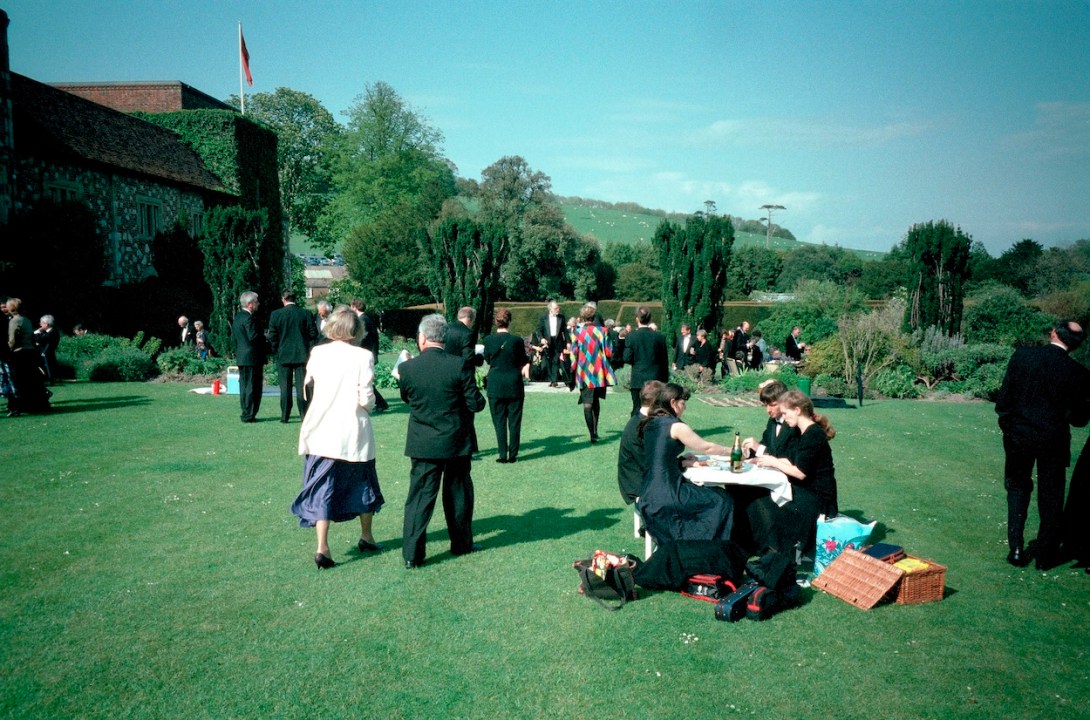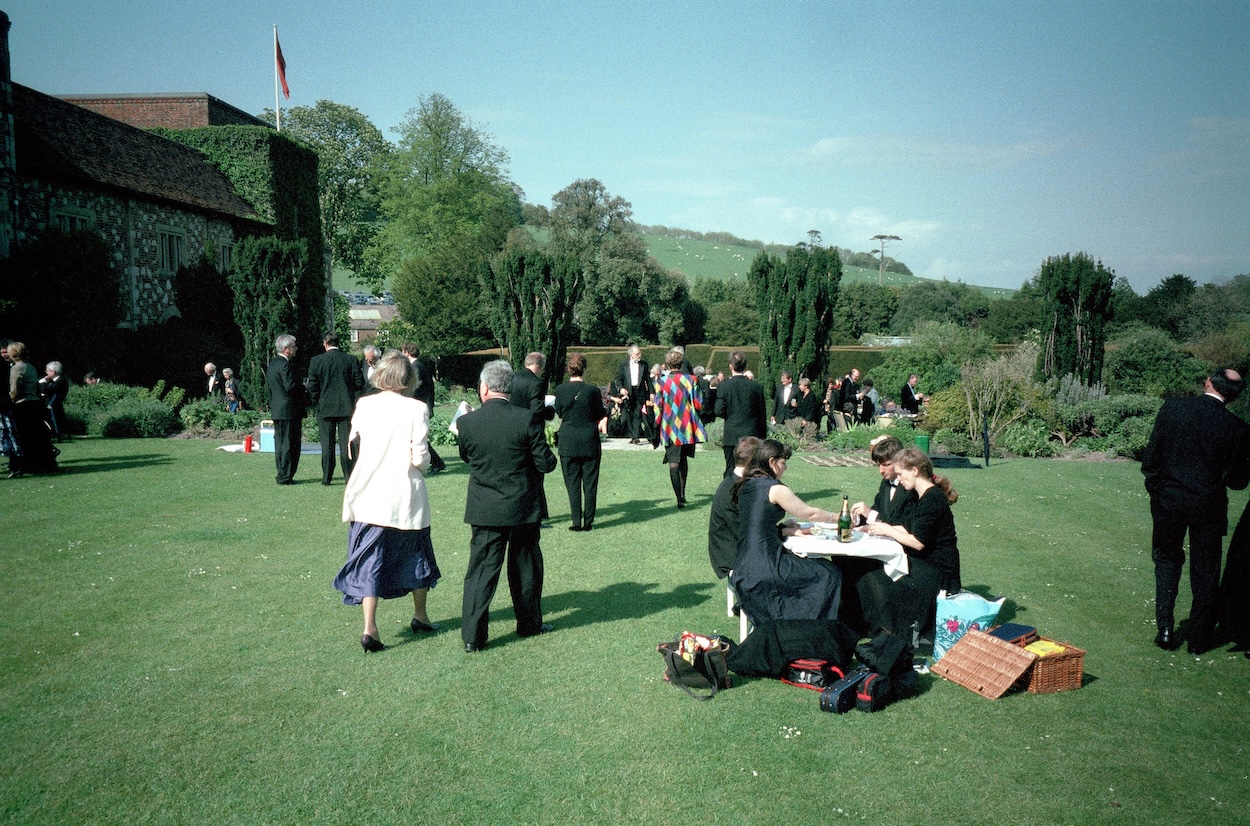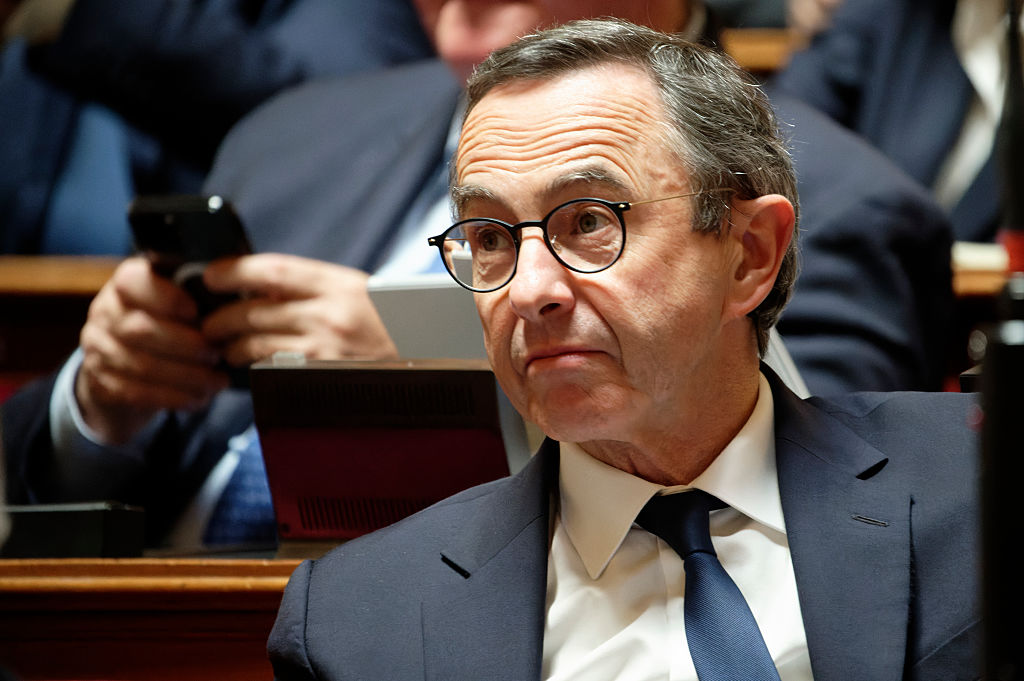There is nowhere in May more beautiful than England with the hawthorn out, the clear light and a thousand shades of green. And there is nowhere more beautiful in England than Glyndebourne, the Sussex opera house between the Downs and the coast.
Every visit to the ancestral pile of the Christie family brings joy and we lucky folk who caught the new production of Parsifal were granted double rations. Wagner’s final music drama is a first for Glyndebourne and completes a triptych of the Master’s late work, following productions of Tristan und Isolde and Die Meistersinger von Nürnberg. As Larkin wrote of Sidney Bechet: ‘Oh play that thing!’
Music-lovers have been coming to this blessed plot of land outside Lewes since 1934 when John Christie invited three refugees from Germany to establish a shrine to Mozart. Fritz Busch, the conductor, was joined by Carl Ebert, the director, and Rudolf Bing, the intendant, in a partnership of equals – more or less.
It’s a well-known story and Glyndebourne remains an example of European integration that has nothing to do with wine lakes. The principal singers in Parsifal are from Germany, Denmark and Norway, as well as America. The director is Dutch and the conductor, Robin Ticciati, Glyndebourne’s music director, is an Englishman. Completing the cast is the great John Tomlinson, ‘JonTom’, originally from Oswaldtwistle, Lancashire, who lives in Lewes and first sang in the chorus here five decades ago.
The principal joy is the music. It would be a strange opera house were that not the case. Glyndebourne has always attracted gifted young artists and given them enough rehearsal time to explore the six works the house presents each summer. So musical standards are high.
But the music is only part of this tale. Glyndebourne is such an enchanting place, with its mature trees, flowers, plants and lawns, that every visit is an arboreal delight, even when it drizzles. A walk round the lake is a preliminary ritual – like the bagging of territory for picnics and a look at the Dutch paintings in the Organ Room. Then you are ready for the fray.
Glyndebourne is well known for its picnics and festival-goers prepare their feasts in skilful and imaginative ways, setting up their tables for the long interval – an hour and a half for Parsifal, between Acts Two and Three. Should you prefer to dine in the Wallop restaurants – and more than 600 people do every night – you will discover what a tight ship they run. It may be ‘country house opera’ but the business is shipshape and Bristol fashion.
Do you have to dress up? As the Anglican liturgy has it: all may, some should, none must. Hundreds of people like to put their best togs on and look grand. Hundreds more dress for comfort. All styles serve here, so long as your money is good.
Excellence – that rare and much-despised quality – trumps everything
And yes, it is expensive. How could it not be? Yet people return, season after season, because excellence – that rare and much-despised quality – trumps everything. If that is elitist then maybe there is something to be said for elitism. Would that everything in this land was run like Glyndebourne.
But Glyndebourne is not elitist in a social sense. People rub along amicably, however they are dressed. There is no sense of exclusion – which is partly why so many people come back. For five hours or so (Parsifal began at 3 p.m. and ended at 9.12 p.m.) you can pretend you are in another world.
Besides, what is expensive? Tickets for the London theatre are often ludicrously overpriced and the performances are not always stellar. Pop concerts can set you back a bob or two and as for the colossal media-tart bore called Glastonbury…
People have always dressed up for events, whether it is Glyndebourne, the Highland Games or the Shrovetide football match in Ashbourne. Sporting fixtures bring out the fanciful in attire just as surely as opera in Sussex and rock concerts encourage extraordinary flights of fancy. There were more peculiar sights when the Sex Pistols played the Albert Hall in March than you will ever see at Glyndebourne. And those of us who caught Roxy Music in 1973 have never quite got over it.
Was Parsifal much cop? Richard Bratby, The Spectator’s excellent music critic, will have his own thoughts and I’m happy to give him the floor. But it was certainly worth £250 and I don’t care who knows. Glyndebourne in summer is a reason for living. Splendour, splendour everywhere.








Comments